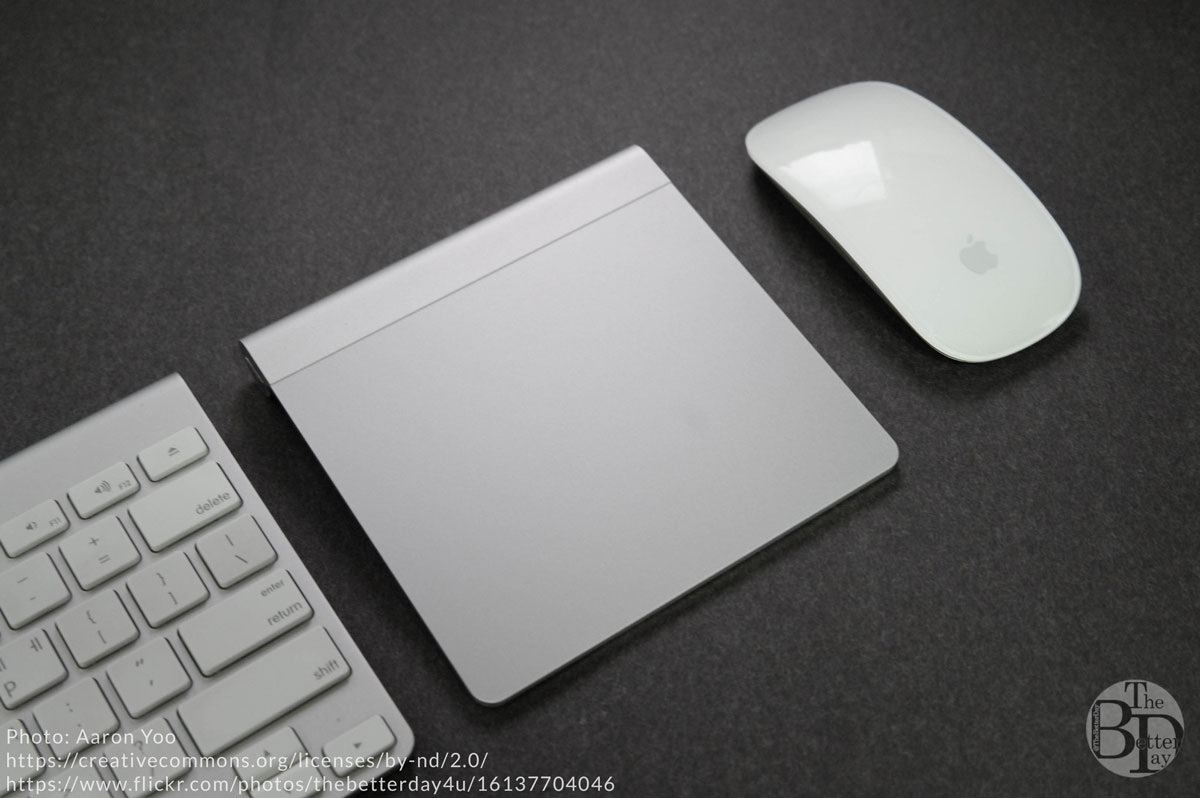Occasionally, when using someone else’s laptop, I swipe my fingers up or down the trackpad to “scroll” a page up or down, and to my surprise, it move the opposite way I expect it to. It’s because a few years ago I switched to Natural Scrolling. For those that don’t know, here’s the difference between the two:
Reverse: Swipe fingers up on trackpad, magic mouse, scroll-wheel, content goes down, scrollbar goes up.
Natural: Swipe fingers up on trackpad, magic mouse, scroll-wheel, content goes up, scrollbar goes down.
Many people are used to reverse scrolling, because when scroll wheels were introduced to mice, they were linked to the indicator in the scroll bar, which controlled the viewport on a page.
In 2011, when Apple made natural the default mode in OSX Lion, I thought it was purely a matter of preference and I was already used to reverse scrolling so I opted to stick with reverse. But while experimenting with different types of workstations, I got to thinking about the concepts of the two types of scrolling, and suddenly it dawned on me that I WAS WRONG!
Natural scrolling is flat out better than reverse scrolling, and here’s why.
Firstly, I find the concept of scrolling itself a little problematic. I like to think of moving the content itself, rather than scrolling a page. The scrollbar on the screen is merely an indicator of the position of our viewport. But our screen/viewport is almost always stationary relative to us. So if it’s not moving around, why are we pushing it? Instead we should be pushing the content, itself, which does move (virtually, anyway).
In the physical world, stuff usually moves when you push it, that’s what our brains expect. And it’s my belief that interfaces should be as intuitive as possible to free up our cognitive capacity for more important tasks than navigating space (like creativity, expression & critical thinking). With natural scrolling, when you push up on a trackpad, the content moves up. If you lay a piece of paper on your desk, and push up (forward) on it with two fingers, which way would it move?
What really drove this concept home for me was when I was experimenting with a standing desk with a monitor down low by my keyboard and mouse, angled up at me. In effect, mimicking a table touch screen computer (minus the touch-screen functionality). The trackpad and screen were on the same plane, which helped me link the the virtual spatial plane we navigate on a computer, and how our input devices (mouse/trackpad/tablets) interact with it.
Natural scrolling on computers is nothing new, it’s how touch screens already work, you push stuff in the direction you want it to go. Having reverse scrolling on a touch screen would feel totally unnatural. We should be doing the same thing with our mouses and trackpads, that we do with our phones and tablets.
Even on non-touch devices, many interfaces have panning tools, which work in the way we’d expect, you grab and push or pull content in the direction you want it to go. Reverse scrolling works in the exact opposite way of these tools, while natural scrolling uses the same intuitive concepts.
Instead of moving a scrollbar/viewport, which adds another conceptual layer, inconsistent with our actual viewport (the screen), we should be moving the content itself.
You may think, “Well I’m already used to reverse scrolling, it’s not worth it to change,” and while depending on your situation, I can’t conclusively say that it is, I can say it seems likely that the reduced cognitive load from using a unified navigational framework across devices will be well worth the small amount of frustration it takes to retrain your brain to go “natural.” Personally, it took me about two days at work to become totally used to natural. In those two days I probably spent about 5 minutes combined re-scrolling pages I’d accidentally scrolled the wrong way.
You can decide for yourself whether it’s worth it to switch (if you haven’t already), but I suspect it is, especially since natural is the way of the future anyway.

